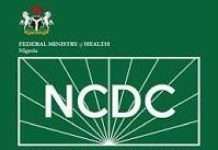
Director of Public Health, Edo State Ministry of Health, Stephenson Ojeifo, says the state has recorded three suspected cases of Mpox.
In an interview with the News Agency of Nigeria (NAN) on Tuesday evening, Mr Ojeifo, a medical doctor, said though none of the cases had been confirmed as positive, residents of the state should be vigilant.
He said: “We have three suspected cases of Mpox; two patients are in Irrua Specialist Teaching Hospital, and one is at the Edo State University Teaching Hospital, Auchi.”
He explained that while the symptoms of Mpox resembled those of other skin rashes, the ministry was maintaining a high level of caution by isolating the suspected cases for proper management.
“We make sure that any suspected case is isolated, while we send samples to the National Reference Laboratory in Abuja for testing.
“So, until the results of the tests are out, we cannot say we have any case of Mpox,” Mr Ojeifo said.
He assured that the patients were not in critical condition but are being isolated as part of the state’s enhanced surveillance measures.
He also said the ministry had strengthened its surveillance across the state’s private, public, and primary healthcare centres.
“The ministry is also working with local government health educators to raise public awareness about the symptoms of Mpox.”
Mr Ojeifo noted that while Edo had managed cases of Monkeypox in the past, the current situation was being taken more seriously in line with the WHO and Africa Centre for Disease Control’s alert.
“We have had pockets of cases of Mpox in Edo in the past and we have always managed them and they get well,” he said.
Mpox is a viral disease and primarily spreads through close contact with an infected person or animal, or by touching contaminated objects.
It can cause serious complications, especially in individuals with weakened immune systems, but most cases are mild and recover without treatment.
The disease is characterised by flu-like symptoms, including fever, headache, muscle aches, and swollen lymph nodes, followed by a distinctive rash that develops into small, fluid-filled blisters and eventually forms scabs.
Infection prevention and control measures for the disease include regular hand hygiene by washing hands with soap and water or using an alcohol-based sanitiser
Other measures are disinfecting surfaces and objects, managing waste properly, and practising respiratory hygiene by covering while coughing and sneezing and using masks in crowded area.
(NAN)










